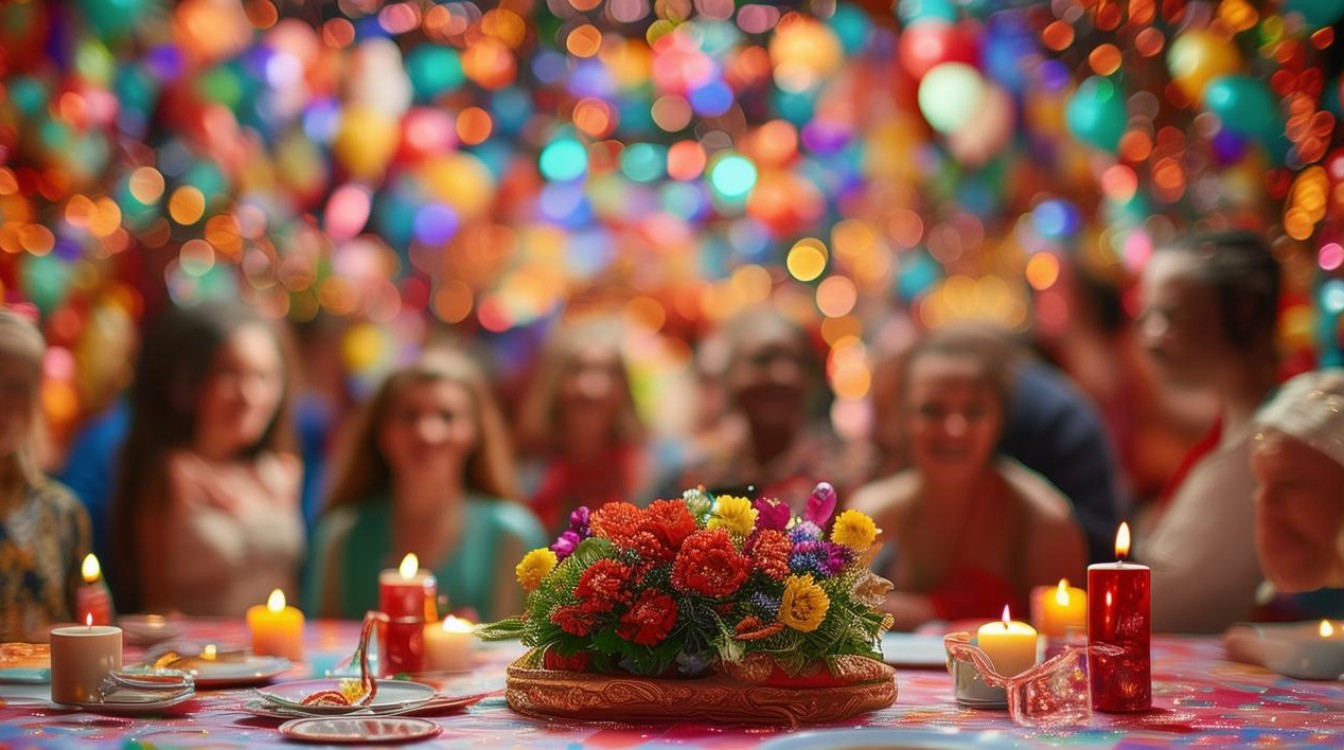
The air hums with anticipation as colorful lanterns sway in the breeze, their intricate designs casting dancing shadows. In every corner of the world, people celebrate unique festivals that weave together history, culture, and human connection. These occasions transcend mere dates on calendars; they become living tapestries of shared joy. Across continents, festivals paint the year with vibrant hues. Japan's cherry blossom season transforms parks into pink oceans, where families spread picnic blankets beneath delicate blooms. The tradition of hanami dates back centuries, symbolizing life's fleeting beauty. Meanwhile, Brazil's Carnival erupts in a riot of feathers and sequins, with samba rhythms pulsing through Rio's streets. This celebration before Lent showcases the nation's African, European, and indigenous roots through music and dance. Winter brings its own magic. Sweden's Lucia procession on December 13th illuminates the darkest time of year with candlelit crowns. Young girls dressed in white sing traditional songs, honoring the martyr Saint Lucy who brought food to persecuted Christians. The soft glow of candles against snowy landscapes creates a scene straight from a fairytale. Similarly, China's Lunar New Year turns cities red with decorations as families reunite for dumpling-making and firework displays that ward off evil spirits. Some celebrations honor nature's cycles. India's Holi festival marks spring's arrival with clouds of colored powder that turn participants into walking rainbows. The ancient tradition celebrates good triumphing over evil while breaking down social barriers—for one day, everyone becomes equal under layers of vibrant hues. In contrast, Mexico's Day of the Dead offers a poignant celebration where families build altars to welcome back departed loved ones. Marigold petals guide spirits home, while sugar skulls and pan de muerto sweeten the reunion between living and dead. Food becomes ceremony during festive times. Italy's Feast of the Seven Fishes on Christmas Eve showcases coastal traditions with an elaborate seafood meal. Each region adapts the menu, from Sicily's salted cod to Venice's squid ink pasta, turning dinner into edible geography. Across the Atlantic, Thanksgiving in North America centers around roast turkey and cranberry sauce, but the true essence lies in expressing gratitude—a practice that neuroscience confirms boosts happiness. Modern celebrations continue evolving. South Korea's Bosingak bell-ringing ceremony on New Year's Eve now incorporates digital elements while maintaining centuries-old rituals. The live-streamed event connects global audiences to Seoul's historic center. Similarly, Singapore's River Hongbao festival blends traditional lantern displays with drone light shows, creating futuristic interpretations of cultural symbols. The universal language of celebration speaks through music. During Trinidad and Tobago's Carnival, steelpan drums crafted from oil barrels produce mesmerizing melodies that fuel street parties. These instruments born from resourcefulness now represent national pride. In Austria, the Salzburg Festival transforms the composer Mozart's birthplace into a stage for classical music performances every summer, proving how artistic legacy can shape city identity. Children experience cultural heritage through festive traditions. Germany's St. Martin's Day sees youngsters parading with handmade lanterns, singing songs about sharing—embodied by the legend of a Roman soldier who cut his cloak for a beggar. The Netherlands celebrates Sinterklaas with elaborate gift poems that encourage creativity and thoughtfulness. Such customs plant seeds of cultural appreciation early in life. Festivals also mark agricultural milestones. Thailand's Songkran water festival originally celebrated the rice harvest's end, with gentle water pouring for blessings. Today's city celebrations have become exuberant water fights, yet rural areas maintain the spiritual aspect. Likewise, Spain's La Tomatina tomato fight began as a spontaneous food fight in 1945; now the sanctioned event draws thousands to Buñol each August, with proceeds funding local charities. The digital age has reshaped how we celebrate. Virtual reality now allows people to "attend" Japan's Gion Matsuri from their living rooms, experiencing Kyoto's massive floats through 360-degree videos. Social media platforms burst with festive hashtags during India's Diwali, as families share photos of oil lamps arranged in geometric patterns. Technology hasn't diminished traditions—it's created new ways to participate across distances. Environmental consciousness is transforming celebrations. Edinburgh's Hogmanay fireworks now use biodegradable materials, while Sydney's New Year's Eve display incorporates solar-powered lights. Portugal's Festa de São João in Porto has replaced traditional plastic hammers with inflatable alternatives. These adaptations show how cultural practices can evolve to address contemporary concerns without losing their essence. The psychological impact of celebrations runs deep. Anthropologists note how synchronized activities—whether dancing at Brazil's Carnival or chanting at Japan's Bon Festival—create neural coupling that strengthens community bonds. The anticipation leading up to events like Christmas activates the brain's reward system, explaining why planning celebrations often brings as much joy as the occasions themselves. Economic aspects reveal another dimension. Venice's Carnevale generates nearly 30% of the city's annual tourism revenue, supporting traditional mask-making workshops. The Philadelphia Mummers Parade preserves niche crafts like feather suit construction that might otherwise disappear. Festivals become engines preserving artisanal skills while boosting local economies. Personal connections form around these shared experiences. A couple might remember their first kiss under Dublin's St. Patrick's Day fireworks, or a family might cherish annual trips to see New England's fall foliage. These individual memories become intertwined with larger cultural narratives, creating emotional anchors across generations. The future of festivals will likely blend preservation and innovation. As climate change alters seasons, harvest festivals may adapt their timing. Augmented reality could add interactive layers to historical reenactments. Yet the core human need for communal joy remains constant—whether expressed through ancient rituals or new traditions waiting to be born. Cultural celebrations mirror society's values and aspirations. When Barcelona's La Mercè festival includes human tower building, it demonstrates Catalan ideals of teamwork and trust. Canada's multicultural cities now celebrate everything from Ukrainian pysanka egg decorating to Caribbean Caribana, reflecting inclusive national identity. Festivals become living declarations of what communities hold dear. The quiet moments within celebrations often resonate most deeply—the hush before midnight on New Year's Eve, the shared smile between strangers during lantern releases, the contentment after a festive meal. These unspoken connections reveal our shared humanity beneath the surface of different customs. In a world that often focuses on divisions, festivals remind us of the joy we can create together.



